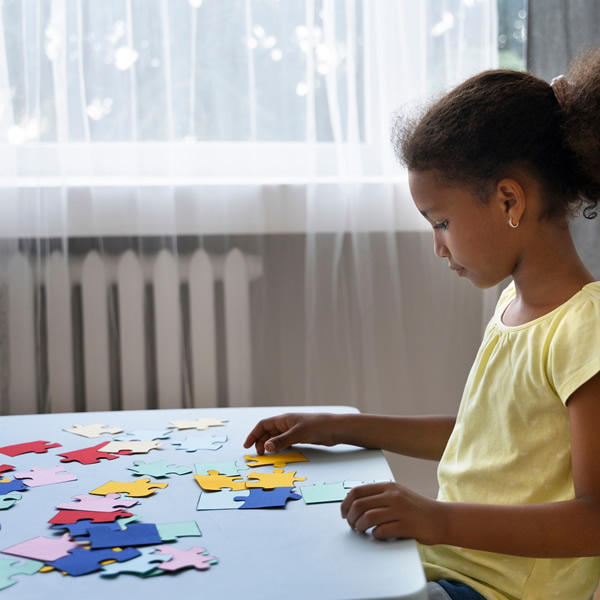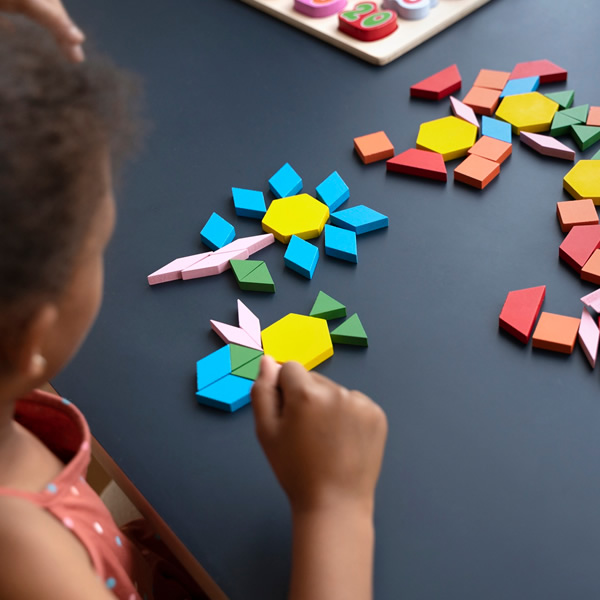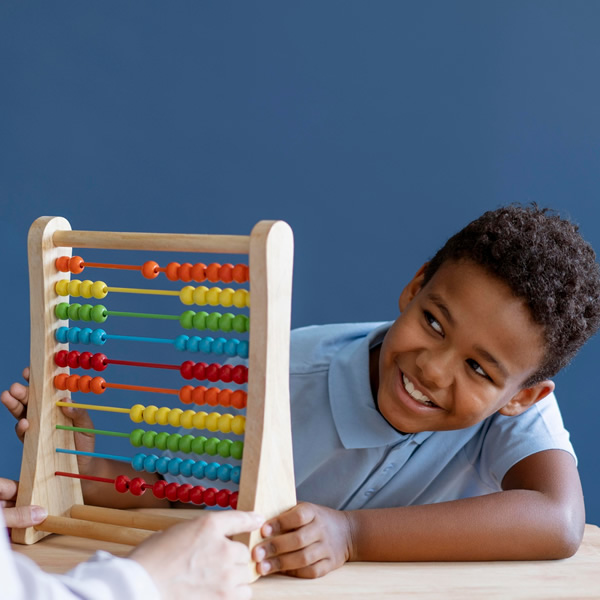ASD Early Intervention

What Does Early Intervention for Autism Mean?
Early intervention for autism means providing therapeutic services to a child with ASD, typically starting as early as two or three years old. During these early years, the brain is still rapidly developing, which is why early intervention is key to a child’s development and functioning later in life. Early intervention can address things like speech and communication, social skills, gross and fine motor skills, self-care, independence, and more. ABA therapy is one of the most used interventions for children with ASD.
Why is early intervention important for autism?
The first few years of a child’s life are the most impactful for development, with new skills being learned very quickly. A child’s brain develops rapidly during this time and is primed to learning new skills and behaviors. Because of this, children are more likely to benefit the most from treatment when provided at a young age (18 months -4 years). Behavioral intervention is most impactful when it occurs during this window of time and is most likely to result in optimal outcomes for each child.
With autism spectrum disorder being diagnosed as early as 2 years of age, it is critical for each child to begin treatment as soon as possible. Skills learned in early intervention programs have the greatest chance of leading to lasting, meaningful growth and lifelong success for our patients. Studies have shown a higher success rate from those who started interventions such as ABA during earlier years of development as compared to starting at older ages. While it is clear that all individuals with ASD can benefit greatly from ABA, early intervention is critical for maximizing progress and giving children the best chance of future success.
What does early intervention look like?
Much like all our treatment programs, early intervention programs are individualized according to the specific needs of each child and the priorities of the caregivers and family. Each program will have unique goals and targets and be especially tailored to the child’s preferences and motivations.
All early intervention programs use evidence-based ABA methodologies and combine naturalistic and structured ABA strategies to maximize your child’s learning. Early intervention programs also have a strong emphasis on learning through play, and strive to teach targeted skills in meaningful, engaging ways. Learning should be fun! Programs also emphasize skills that lead to lifelong success and learning. Communication skills, social awareness and engagement, learning readiness, and challenging behavior reduction are some of the primary areas prioritized that provide a foundation for future growth.
Early Intervention Strategies
Early intervention strategies will look different for every child. Your child’s plan will be created specifically to their needs. However, there are some common strategies used within early intervention.
Applied Behavioral Analysis
Applied behavioral analysis or ABA is a commonly used strategy with children with autism under five years old. ABA focused on identifying and modifying behavior. While ABA focuses on behaviors, it also helps in many other ways, including increasing language and social skills. Children with autism with aggressive behaviors can also benefit from ABA and autism aggressive behavior strategies. Because ABA is working to increase positive behaviors, one way to do this is by introducing calming strategies for autism. Some of these could include creating a calm corner and teaching coping skills.
Social Stories
Social stories are great teaching strategies for students with autism. They can also be effective in early intervention programs. A social story is a story that gets created for a specific child in order to prepare them for something or teach a behavior. For example, if your child struggles to play well with other children, a social story can get created that looks at the expectations within that setting. These stories can be used within an ABA program. Social stories are the most effective in children with higher language comprehension skills. These stories are also most effective when presented at the right time.
Sign Language
Children with autism often struggle with communicating their needs and wants. This can lead to frustration and aggressive behaviors due to not knowing how to handle those feelings. For children with autism who are more visual learners, sign language can open the door to communication. Pairing a spoken word with sign language can help your child begin to make necessary connections.
Occupational Therapy
Occupational therapy can help children with autism learn how to do activities of daily living. These skills are developed through various methods including play and adaptive strategies. Children with autism can benefit from occupational therapy in a variety of ways. Some of the gains you can see include fine motor skills, large motor skills, visual skills, communication, problem-solving, and more.
Floortime
Floortime is a type of play therapy for children with autism. This therapy focuses on helping your child with autism build communication skills and emotional connections. This type of therapy can be used by parents, professionals, or para-professionals in many settings. One of the benefits of floortime is that anyone can go through the training.
Picture Exchange Communication System
A picture exchange communication system or PECS is another early intervention strategy utilized for children with autism. This is another augmentative alternative communication method for children with autism. For children with autism that are unable to communicate verbally, this can open doors. In this method, your child is taught to give a picture of the item they want in exchange for the item.
Music Therapy
Music therapy can help your child with autism improve their skills in many areas including:
Social skills, Communication, Sensory issues, Behavior, Cognition, Perceptual/Motor skills, Self-determination, Self-reliance
Music can be used in therapy as a motivator. This means that it can be used as a natural reinforcement for desired responses. However, music therapy can also help your child with autism in other ways. At Dream Big, we love to use music in our playtime and therapy.
Early Autism Intervention Activities You Can Do at Home
No matter the diagnosis, play is always a powerful tool for parents and caregivers that can be used at any time. Plus, it's fun! Use this guide and discover ways to incorporate beneficial play strategies into your day with your child.
Imitate
If your baby is shaking a rattle, shake one too. If they coo, coo back. "Imitation is one of the main ways babies learn about the social world—we figured out how to behave by watching what others do. "Our brains have circuits designed for imitation, but that part of the brain doesn't function normally in children with autism. When you copy your baby, it helps them see a link between what they're doing and what you're doing, which can stimulate those important neural circuits."
Show excitement
Let's say you're playing with a pop-up toy. Whenever a figure pops up, look your little one in the eyes and show surprise and delight. "The sharing of enjoyment helps your child understand how to make sense of what's going on in their environment,". This is also the perfect way to encourage what experts call joint attention skills—when a child directs your attention somewhere. While joint attention skills develop in most babies around age 1, this isn't as natural a skill for babies with autism. "If your baby is playing with a block, point at it and tell them how excited you are about it,". "This shows them you're aware of what they're playing with and that you can enjoy things together.
Follow your baby's lead
You may have a preconceived notion of what playtime looks like (stacking cups! banging blocks!), but observe what makes your baby happy and engage them with that. "Let them show you what they're interested in". For example, if they're playing with a drink coaster or a paper towel roll, don't try to get them to read a book—get down on the floor and marvel at the coaster with them. "For a baby who might be developing autism, you want to enter their world and make it fun". "Letting them direct things helps you make sure they enjoy playtime.
Break out in song
Children who are later diagnosed with autism may not have the same language skills as other kids. Luckily, you can help develop their unique language skills by changing your tune. "Songs turn routine moments into chances to communicate, and because words are attached to a melody, it's easier for your baby to engage with them—especially when there are gestures that go along with what you're singing". Changing a diaper? Sing "Head, Shoulders, Knees, and Toes" while touching each body part. Giving them dinner? Sing about veggies.
Take turns
Encourage interactions that involve collaboration and taking turns. "One early sign that a child has autism is that they don't initiate communication, so you want to help your baby grasp that it's something they can do". You may not be having actual conversations, but you can still introduce the concept that first you do something, then they do it, with the back-and-forth repeating again and again. Plenty of classic games involve taking turns, like peekaboo and rolling a ball back and forth. It can be as simple as clapping your hands, and then encouraging your child to clap theirs.
Grab the spotlight
"A child who may have autism struggles to grasp that people are more important than objects". To help your baby distinguish people from things, make a spectacle of yourself. "If you walk into a room and they're sitting there, talk to them and be super-interesting". You can do a funny dance or speak emphatically. Another way to encourage them to look at you is to put yourself front and center while you feed them or read them a book. "Position yourself so your face is directly in your baby's sight". For a baby who is less interested in looking at people, you want them to associate pleasurable activities, like eating, with your face. They'll realize you're part of the experience."




